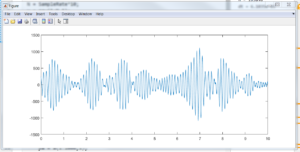Broken Links on virgo-gw.eu and lack of Internet strategy for gravitation
Hello,
I was at https://www.virgo-gw.eu/#about and clicked on “Click here for more information on the Virgo experiment and its science.” to find that the link is broken. “page not found” “There is no offer for the moment, stay tuned”
I am looking at the O3a data at https://www.gw-openscience.org/archive/links/O3a_16KHZ_R1/V1/1238166018/1253977218/simple/
I can download it and read it using MatLab and other tools. I can do statistics and apply a range of tools to interpret it.
But what I am missing is a clear sense of how to approach separating the single interference strain datastream into two vector strains along the axes of the instruments. You don’t seem to check time of flight by direct means, it is implicit in the interference calculations. But it has been a long time since I went through that in school.
I have looked at LIGO data for the last few years. And remember seeing some papers on the detailed processing. That link to “A guide to LIGO–Virgo detector noise and extraction of transient gravitational-wave signals” at https://iopscience.iop.org/article/10.1088/1361-6382/ab685e is pretty generic statistics that I would apply to any signal. Not really specific to a large scale interferometer.
The link to “Virgo and EGO have also established a scientific forum – the VESF – for astrophysicists and theorists, dedicated specifically to the furthering of scientific knowledge related to Virgo. More information is available here.” is also broken.
I met Joe Weber and Charles Misner when I was studying gravitation at the University of Maryland at College Park from 1975-1979. Joe had already run into problems but he was still very adamant that the technology could be applied to detect and communication, and explained how. His displacement sensors were not the best. He encouraged me to read and follow the path that Robert Forward laid down in his dissertation, “Detectors for Dynamic Gravitational Waves”. So I have been following this for many years. Robert starts out with the need for common units and methods for gravitational waves and electromagnetic waves. It turned out harder than he imagined. I did not meet him until many years later, and then only by email.
Anyway, I doubt anyone cares about my personal history or the hopes of people I met. I am just trying to use the data for a simple experiment, and need a way to assign the difference in path length to the two arms of the interference path. I will eventually work it out, I always do. But this must be a simple problem that many people have dealt with. There must be data on the motion of the individual masses, not just the combined strain for the whole. Probably trivial if you know, but hard to find from the outside with so many thousands of pages to look through.
There is a pretty good article you might want to recommend to people:
“Gravitational Wave Detection by Interferometry (Ground and Space)” by Sheila Rowan Ginzton & Jim Hough Aug 2016 at https://link.springer.com/article/10.12942/lrr-2000-3
They describe the motion of the masses. So there must be monitors for the positions of each mass. That large oscillation of the signal must be pendulum motion of the various pieces?
You have scattered things over 10,500 pages on your virgo-gw.eu site, so no one on the Internet can find a clear picture of what you are doing, let alone the whole collaboration. I have been Director of the Internet Foundation for 23 years now, and it never ceases to amaze me that such large organizations seem to have no clue that the Internet is for everyone and is open to all. People do not follow linear paths. And just adding more pages does not add clarity, it just adds confusion and duplicates that have to be sorted by everyone. You only have a few hundred collaborating groups but the potential is that every person on earth (about 4.8 Billion now have some level of access to the Internet) could become involved in gravitational things. I have followed gravitation closely for more than 40 years now and see that it is likely to replace electromagnetism (or merge) so the next century might be the gravitational century as the last was electricity and magnetism and it technologies. And the gravitational wave community is still run like a small group with no coherent Internet methods. On the Internet, anything less than 10,000 organizations is small.
Richard Collins, Director, The Internet Foundation
This is the first 10 seconds from L-L1_GWOSC_O3a_16KHZ_R1-1244852224-4096.hdf5. If I counted right, there are 86 peaks. So the period for this basic oscillation is about 10/86 = 0.1163 seconds or 8.6 Hertz. But what are the different masses doing? Are they all swinging at their own rates? Why make me sort it out from one time series? There must be supplemental data somewhere? Thanks for any clues.

FileName = “E:\LIGO\L-L1_GWOSC_O3a_16KHZ_R1-1244852224-4096.hdf5”;
SampleRate = 16384;
raw = single(10^21*h5read(FileName,’/strain/Strain’));
N = SampleRate*10;
y = raw(1:N,1);
dt = 1/SampleRate;
x = dt:dt:(N*dt);
plot(x,y);
SampleRate = 16384;
raw = single(10^21*h5read(FileName,’/strain/Strain’));
N = SampleRate*10;
y = raw(1:N,1);
dt = 1/SampleRate;
x = dt:dt:(N*dt);
plot(x,y);
The email info@ego-gw.it went to another email box that was full. I went to Twitter to ask where there is a working email to report broken links and to ask questions. Still too many place on the Internet with stuff about gravitation, but none really authoritative or correct – because each author only pays attention to writing, and not to the consequences of all the writings posted randomly on the Internet on global research and education.